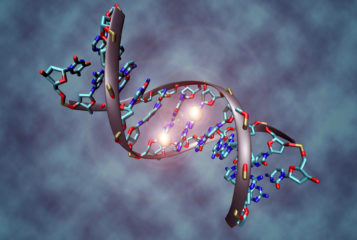|
BBC2, Tuesday 20 March 2012 Presented by Gabriel Weston |
Last week's Horizon on BBC2, 'The truth about fat', follows surgeon Gabriel Weston as she looks at the latest research exploring why so many people are clinically obese.
Gabriel opens walking through a food market with all sorts of delicious items on display, telling us how obesity in Western society has reached epidemic levels — the epidemic seemingly striking randomly, with some, but not all of us gaining pounds. At first, she says, she assumed that being obese resulted from a lack of willpower, but has been convinced by recent research that there's more going on. It is this research, she says, that may be the key to tackling the obesity epidemic. It's a rather sensationalised and shaky introduction - does anyone really feel that obesity can be thought of like a disease that strikes 'randomly'? - but I was prepared to give the programme the benefit of the doubt.
The bulk of the programme looks at research exploring the role of hormones, genetics, epigenetics and neuroscience in weight gain. Unsurprisingly, Gabriel's conclusion is that all of these factors have a role to play. Nothing really new here, but credit where credit is due, some of the studies did provide insight into exactly how these factors influence our weight.
In the first of these sequences we follow Gabriel on a fast as Dr Carel le Roux from Imperial College London measures the release of two hormones — her 'hunger' hormone and her 'full' hormone. It is these two hormones, we are told, that control our desire to eat, to feel hungry, and to feel full. 'My hunger hormone was so powerful', says Gabriel as she tucks into a chocolate croissant,'that it actually affected my decision about what and how much to eat'. Inadequate secretion of the full hormone is what causes many overweight people to lack a feeling of fullness when eating.
For the second section we meet (and are shown a lot of photos of) discordant identical twins, or twins of different body weight. We meet Professor Tim Spector from King's College London, who is using these twins to explore the role of epigenetics in weight gain. Professor Spector's work suggests that stress levels over the course of a lifetime may affect the activation of certain genes that influence obesity.
The third sequence centred on Professor Keith Godfrey from the University of Southampton (cue cinematography of boats and the sea). Professor Godfrey produced a study following over 12,000 mother-child couples for 15 years from prior to the child's conception and through early life. The study showed that a baby's development in the womb can explain about a quarter of the difference seen in childhood weight — the strongest single factor related to childhood obesity found yet. This effect was related to the RXRA gene, whose activation in the umbilical cord was shown to be controlled by the mother's diet.
But it is the research examined in the final section that is the most compelling. We meet Marylin who weighs over 21 stone. Dieting has consistently failed for her, and she is now about to undergo (in fact we get to watch, in graphic detail) gastric bypass surgery. Dr le Roux, who we met earlier, believes that such surgery can change the level of our hunger/fullness hormones so that in addition to physically reducing the size of the stomach, a gastric bypass also affects a patient's motivation to eat. And indeed after her operation Marilyn says that unlike previously, she now feels full when she eats and lacks a taste for fat and sugar.
Enter psychiatrist Dr Samantha Scholtz from Imperial College London. Dr Scholtz performs a brain scan on Gabriel as the surgeon views pictures of high fat foods. She first contrasts Gabriel's low brain activity with the high brain activity of an over-weight individual, and then remarkably, to the low brain activity of that same over-weight individual after a gastric bypass. This is a very interesting result and Dr le Roux suggests a future where we can use alternative devices to surgery to create such desired effects.
Overall, we are told about some intriguing research in obesity, and some ideas on how obesity could be tackled in the future. But rather than telling us something completely new, the studies discussed provide insight into how factors such as our genetics, hormones and brain, can influence weight. Further, we are told this in the slightly sensationalised manner familiar to regular viewers of Horizon. I suspect that, as happens elsewhere in science, discussing the research in this way paints it as more ground-breaking than it really is. It may also contribute to the growing belief that our weight is something beyond our control and that people are being struck down, entirely randomly, by the obesity epidemic.






Leave a Reply
You must be logged in to post a comment.